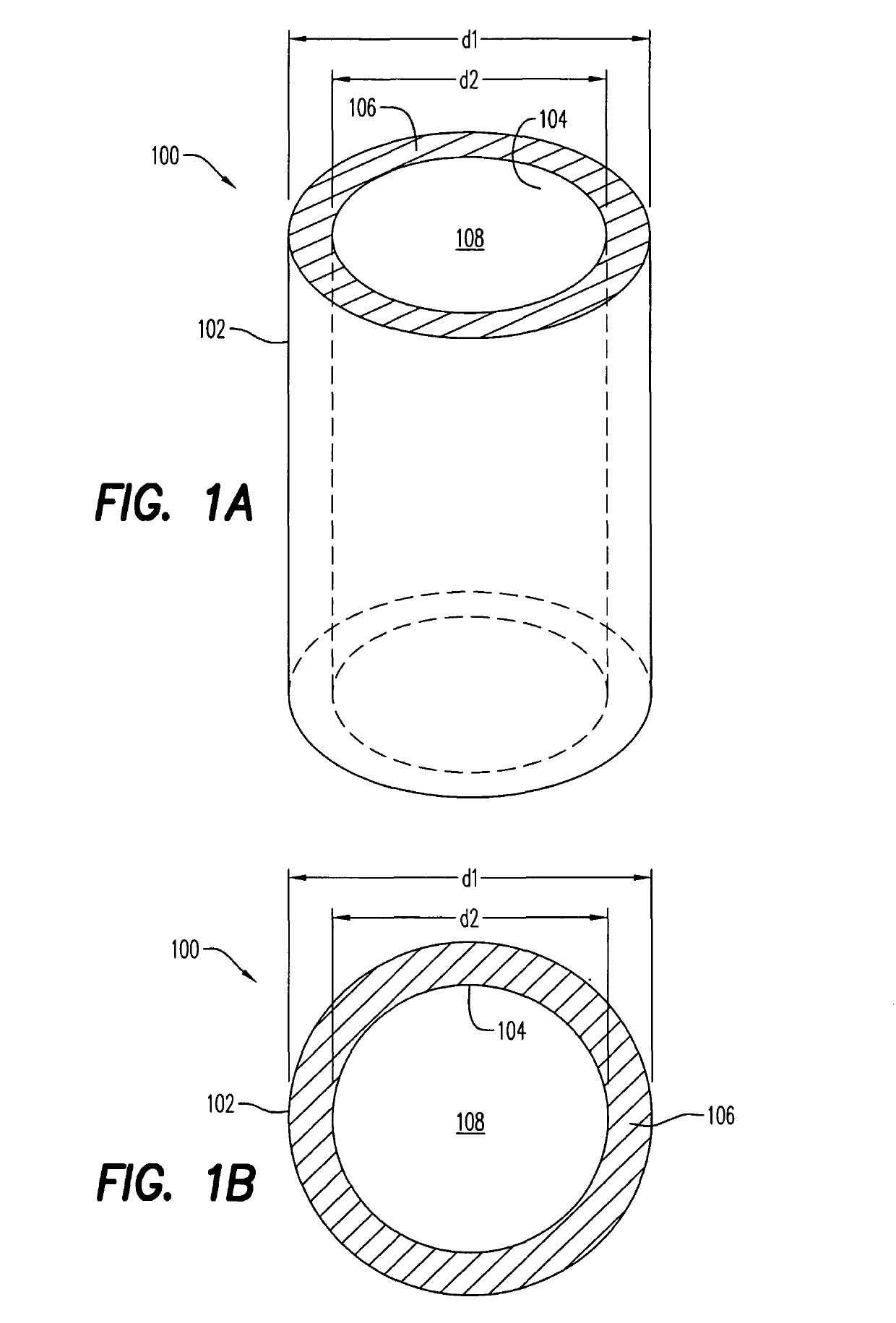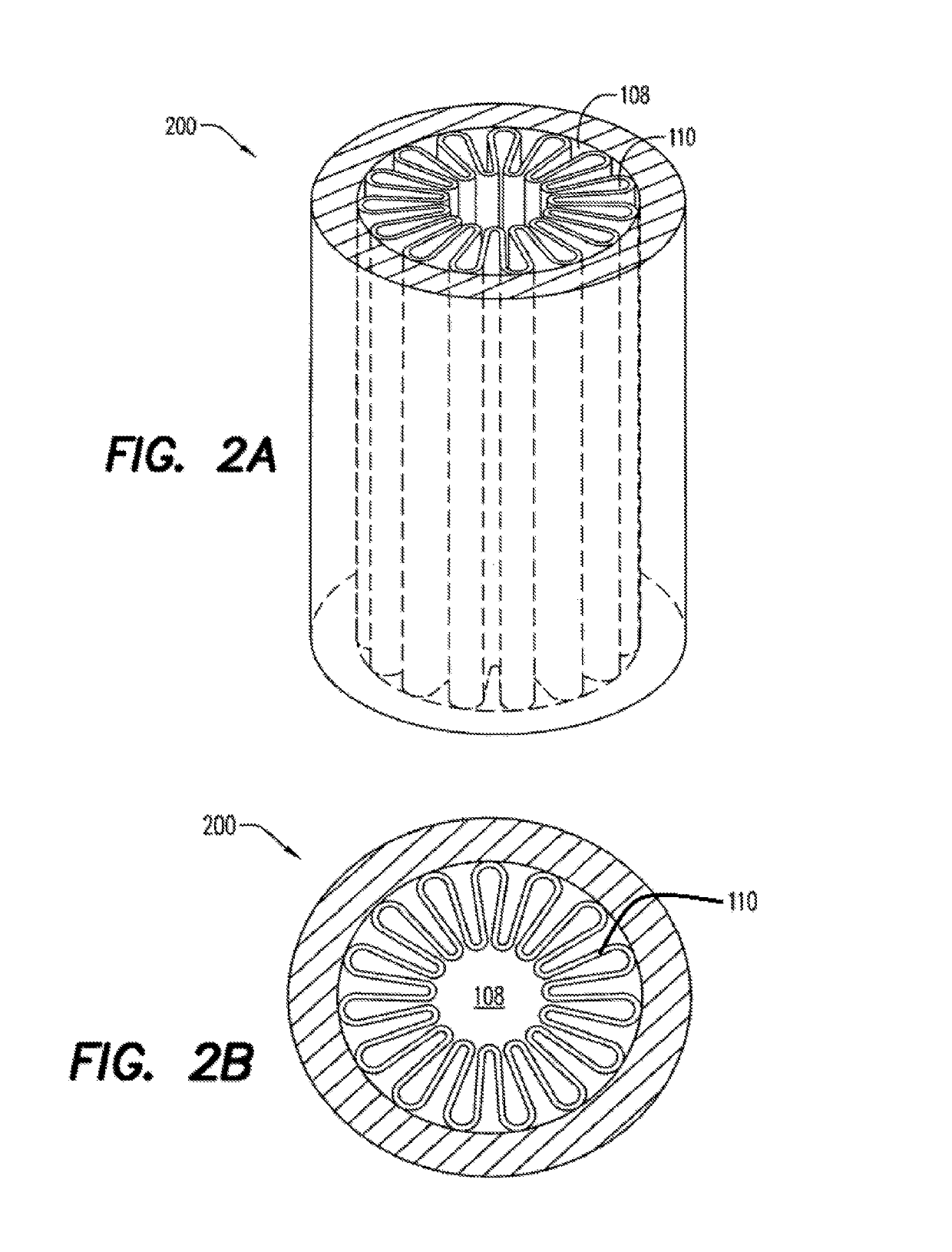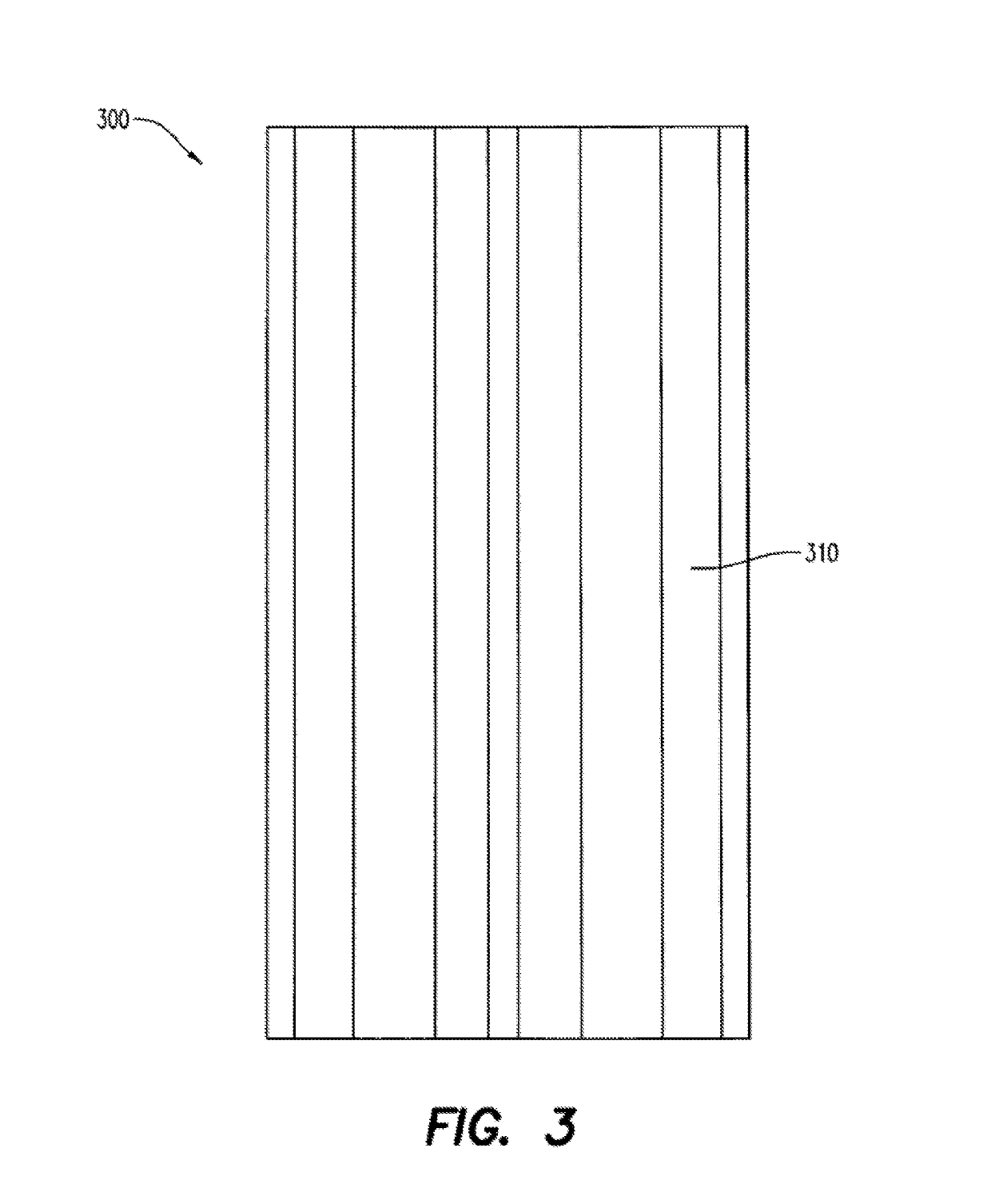Fluid purification media and systems and methods of using same
a technology of purification media and fluid, applied in the field of purification media, can solve the problems of increased pressure drop, complex and difficult design of these media, and widespread diarrhoea due to water-borne pathogens in unsafe drinking water, and achieve the effects of reducing or avoiding direct impingement of fluid, small thickness, and high flow ra
- Summary
- Abstract
- Description
- Claims
- Application Information
AI Technical Summary
Benefits of technology
Problems solved by technology
Method used
Image
Examples
experiment 1
[0134]A pleated Ahlstrom Disruptor fabric having 37 pleats each having a 0.25 inch length was rolled into a cylinder having a 4.5 inch diameter and a 10 inch length was introduced into a radial flow housing. The system was subjected to challenge water according to NSF testing protocol 53 for live cyst with AC dust. At a flow rate of 5 GPM, the following results were obtained:[0135]25% cycle—99.999% reduction[0136]50% cycle—98% reduction[0137]75% cycle—91% reduction
experiment 2
[0138]The same pleated filter as described in Experiment 1 was inserted into the center of an annular rigid porous polymeric purification block having a thickness of 17 mm and made from high porosity, high molecular weight HDPE. The resulting assembly was inserted into a radial flow housing and subjected to the same NSF testing protocol. At a flow rate of 5 GPM the following results were obtained:[0139]25% cycle—99.999% reduction[0140]50% cycle—99.999% reduction[0141]75% cycle—99.999% reduction
experiment 3
[0142]The same pleated filter as described above but having 17 pleats each having a length of 12 mm was formed into a cylinder having a diameter of 1.5 inch and a length of 20 inches and introduced into a radial flow housing. The assembly was subjected to the same NSF testing protocol. At a flow rate of 2 GPM the following results were obtained:[0143]25% cycle—99% reduction[0144]50% cycle—97% reduction[0145]75% cycle—86% reduction
PUM
| Property | Measurement | Unit |
|---|---|---|
| porosity | aaaaa | aaaaa |
| thickness | aaaaa | aaaaa |
| length | aaaaa | aaaaa |
Abstract
Description
Claims
Application Information
 Login to View More
Login to View More - R&D
- Intellectual Property
- Life Sciences
- Materials
- Tech Scout
- Unparalleled Data Quality
- Higher Quality Content
- 60% Fewer Hallucinations
Browse by: Latest US Patents, China's latest patents, Technical Efficacy Thesaurus, Application Domain, Technology Topic, Popular Technical Reports.
© 2025 PatSnap. All rights reserved.Legal|Privacy policy|Modern Slavery Act Transparency Statement|Sitemap|About US| Contact US: help@patsnap.com



